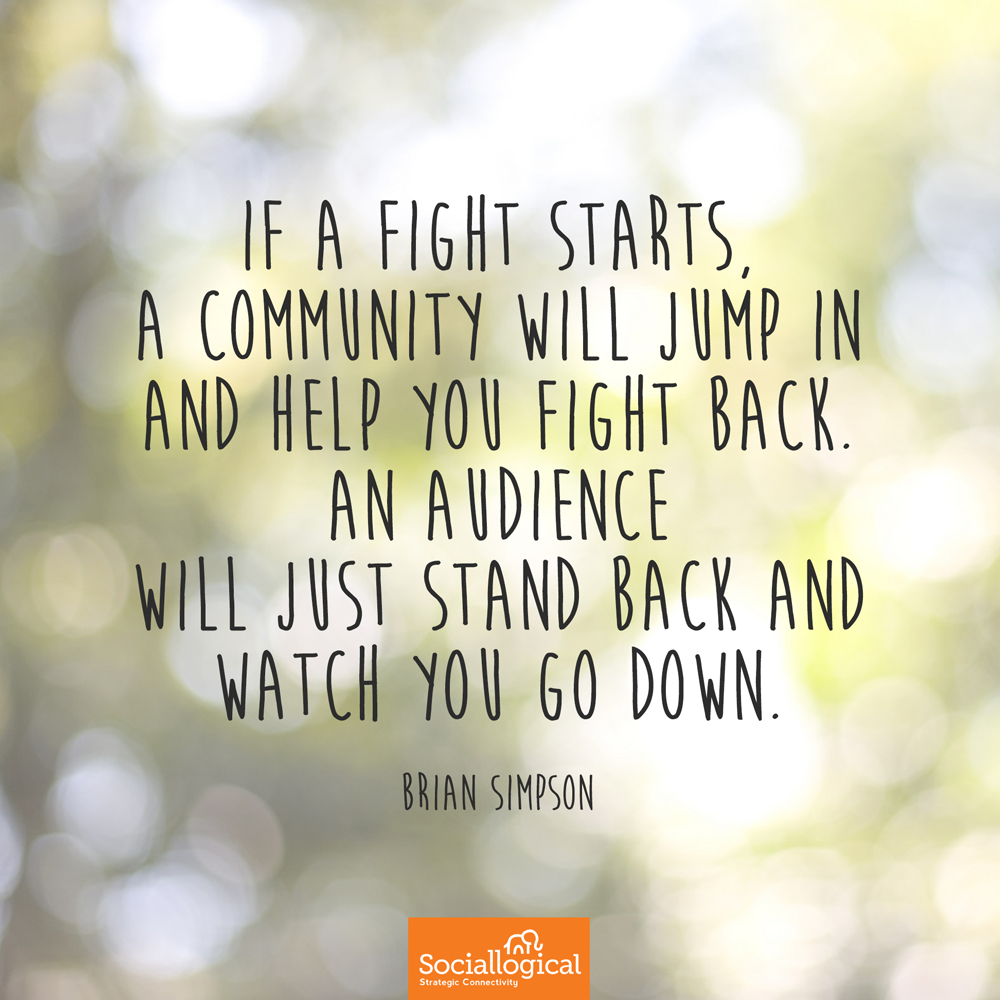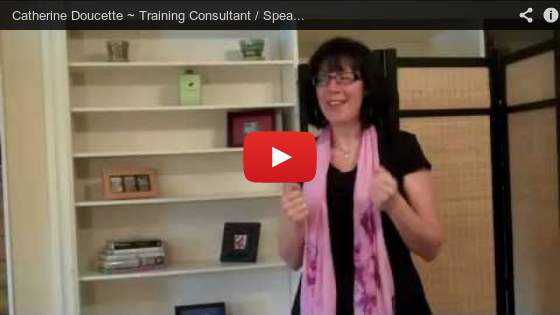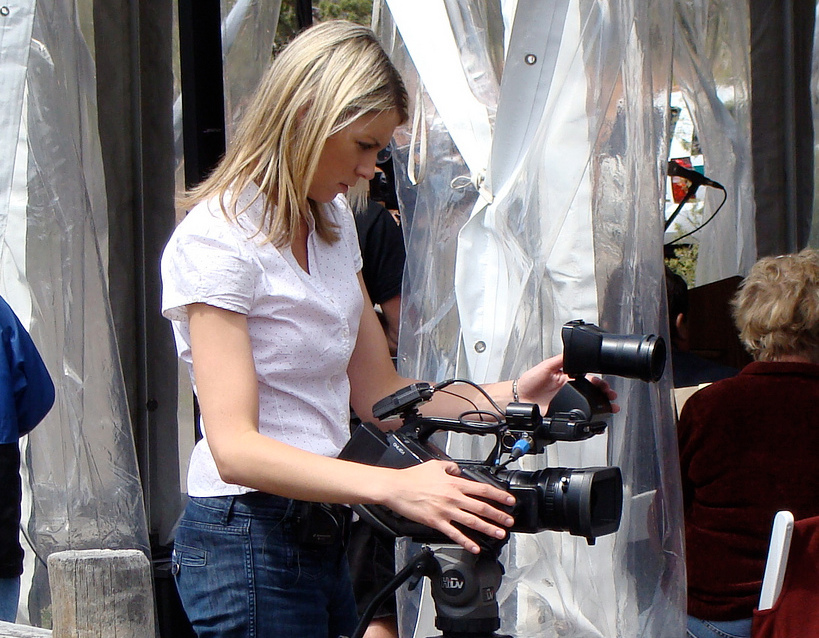What makes social media an essential tool for social enterprise is
Advice, resources, and insight on how to make social engagement work to grow your business and career.
Viewing entries in
Storytelling
What makes social media an essential tool for social enterprise is
“all social media is fundamentally about relationships and people connecting to people — not companies or brands”
It turns out that storytelling, especially through a visual, "moving picture" medium like video, TV, or film is how we see things in our minds so they speak to us in our most natural language
The best content a business can share is their own stories. If a client cares about what you sell, they will care about the stories you have to tell. But how the story is told and shared matters a great deal and there are a variety of ways that can be done with both large budgets and no budgets.
Buzzwords are like passwords that make people feel like they are locked out if they don't fully understand their meaning.
Once you Find out who is influencing your company’s brand you can build relationships with them. If the leaders of your company are not among them, they need to be and here are a few steps you can take to figure out who they should be and how you can increase their influence.
 Richard, Vincent, Katherine, Margaret, Lawrence, and Elizabeth have all been lost to me online because I have been looking to connect with Dick, Vinny, Kate, Peggy, Larry, and Beth - the names I know them as.
Richard, Vincent, Katherine, Margaret, Lawrence, and Elizabeth have all been lost to me online because I have been looking to connect with Dick, Vinny, Kate, Peggy, Larry, and Beth - the names I know them as.
Just because your parents named you Stephen doesn't mean you are disrespecting them by being Steve online. And if everyone knows you as Steve, when they go looking for you online they're not likely to find you if you're listed as Stephen.
The whole purpose of creating an online profile, on any social media channel, is to connect with people and to give them an authentic picture of who you are.
So the best approach is to think like a search engine. What will people search for when they look for you? Make that the name that you use on your social profiles. And while you're at it, make sure that the keywords that people are likely to think of when they think of you are also included in your profiles so they get picked up by search.
My real name is Jeffrey. It's the name my parents gave me and it is the name on my Passport and other formal/official documents. But everyone in my life knows me as Jeff. Fortunately for me, Jeffrey is likely to get picked up by most search engines when searching for "Jeff" but a scan of search results by any friend who is looking for me is likely going to miss my 7 letter full name if their brain is scanning for 4 letter names starting with J. So I use Jeff always.
Now imagine if your name is Margaret but you are known as Peggy! Who in the world is ever going to know to search for Margaret?
People aren't going to visit your profile repeatedly after they've connected with you. When they are looking for you you don't need them to find the formal you, just the you they are familiar with for one simple reason: so they can connect with you.
Include your more sophisticated name elsewhere in your profile if you can. In your Linkedin summary, maybe mention your full name somewhere or even tell the story of how you came to shorten your name if it's a good one.
You don't need to let go of your proper name. But if you don't use it regularly, put it in the same place you have it in your everyday life: in the background as a passing reference.
Photo ref: That's me and my friend Manami Fukuda being very sophisticated while modelling for a very fun and memorable event a few years ago.
 Bringing one group of friends into a conversation that's happening in a different place on the social web isn't always easy. Sometimes it's awkward and sometimes it's unwanted. But you never can tell where the conversation will strike up and sometimes it makes sense to bring those conversations together. And it always makes sense to bring the best content you have curated into your media hub: your blog.
Bringing one group of friends into a conversation that's happening in a different place on the social web isn't always easy. Sometimes it's awkward and sometimes it's unwanted. But you never can tell where the conversation will strike up and sometimes it makes sense to bring those conversations together. And it always makes sense to bring the best content you have curated into your media hub: your blog.
For a while now Twitter has been allowing tweets to be embedded into web pages with a little bit of code they provide with each tweet. Just look under any post on Twitter.com and you'll see a "more..." link that drops down to expose an "Embed" link. Grabbing the code provided will allow you to embed something like this:
"Either write something worth reading about or do something worth writing about." - Ben Franklin #quote
— Sociallogical™ (@soclogical) November 21, 2011
I could just paste a quote into my post so you can see it and read it, but because I embedded it as a tweet, you can now retweet it, favorite it or do whatever you like to interact with that content on Twitter.
Now Google+ has entered this game, allowing posts on the fastest growing social channel in the world to be embedded into blogs and webpages everywhere, pulling new people into conversations that are already in full swing.
There are a few things that make this even more interesting than Twitter's offer:
Give it a try. In the drop down menu in the top right of your public Google+ posts you'll see the link to "Embed this post". Grab the code and use it the same way as the Twitter embed code.
Embedded Twitter and Google+ posts provide interesting ways to repurpose your social content into your owned media and introduce one segment of your community to another to extend the conversation and bring your brand community more closely together.
What could you embed in your blog that pulls your social media islands closer together?
An African proverb says that it takes a village to raise a child. I believe this is true. I can't imagine where in this world my baby boy would be without the love, support and nurturing of those in our community.
I am also lucky enough to be a member of a more specific community of new moms. That’s us up there in the photo. Bi-weekly we meet in each other’s living rooms, put on a pot of coffee and ventilate our baby woes, share stories and experiences, learn from one another, laugh together, reassure each other that we are doing just fine and, most importantly, we remind each other that we are not going this motherhood thing alone.
Much like it takes a village to raise a child, it takes a community to raise a brand.
This is the next lesson in a series of posts about what my infant son has taught me about life and content marketing (here's lesson 1).
I will never forget the music to my ears that was a fellow expectant mom exclaiming, “we should get together for regular coffee and Bailey’s gatherings after our babies are born.” I'm not sure if I was more excited to fathom a social life after baby, or the ability to finally enjoy an alcoholic beverage again. In any case, she was the leader our mommy community needed.
You see, it takes a leader to get a community going, and then it takes keen individual interest to keep it going. We mommies are fortunate to have all the right ingredients for a healthy community.
Sure, we get together and talk about the best baby rearing practices, articles we've read, developmental milestones and statistical norms, but these discussions alone are not what gel our community together.
This stuff we can get from the googles.
The cohesion of community goes beyond information sharing. A community is formed around a common goal, an emotional connection, a shared opinion, a sense of security, belonging and ownership, safety, non-judgement, protection and understanding. We have expressed on many occasions that we love and care for each other’s babies as if they were our own.
When you’re creating a community around your brand, your members need something to CARE about.

Actually, mean people can galvanize a community, pulling people together to care more deeply for what brought them together in the first place.
Motivated by who-knows-what, some people are just innately mean-spirited. It is no secret that social media is a breeding ground for meanies to unleash their inner bullies. They can attack the community, sometimes in very stealthy ways, by framing their communication in an accepted manner and style. Eventually their contributions will undermine what people in a community care about and raise the ire of some members to defend what is important to them, and in doing so they will freshly define the essence of the community for others to rally behind.
The critical mass is the tipping point, the point at which the community becomes self-sustaining.
Finding this threshold is not cut and dry. Apple Computer's current community mass is over 200 million. Our mommy group: 11 pairs of moms and babes. There is no magic formula to determine the critical mass of your community, however you will know it has begun when your community starts to initiate activity independent of your leadership. For example, a retailer might plan events that bring customers to their store but critical mass is achieved when the community begins to plan their own events around the brand. Recently I was invited by a friend to attend a party at a local shoe store. The staff were every bit a part of the party and little to do with the planning.
Sadly, our mommy leader needed to ‘bow out’ as she put it, to return to full time work. She is still very much a member of our group, but our mommy community lives on in her absence.
If you spoon feed the right ingredients that support what your community cares about most, there will come a point when you can sit back, and enjoy. Like an infant, your community has learned to feed itself.
No one is a member of just one community. We overlap and cross-reference and bring great things from one into another. But what binds a community is the one or two things its members care about the most and the characteristics of how the caring is expressed. Our mommy community cares primarily about our babies. But the characteristics of our community are based on openness, non-judgement, and love of a good time in a real sense, not just a motherly one.
What does your brand community care about the most and what are the ways in which you express that caring? If you find 5 minutes today, list these things for yourself. If you can identify what really matters to your community it might change how you share with them.
Next lesson: Trust with a capital T
The quote above from Brian Simpson actually came to us from a great ebook by our friends at Measurely.
 Two years ago I signed my team up to participate in a course to teach us how to build a social business. It lit a flame that has been burning ever since. Telling our company’s story using social channels has helped us build community around the world. The course was Sociallogical’s Understanding Social Business and, after completing the course, Sociallogical’s Jeff Roach and I discussed the possibilities of putting together a course about the power and brand empowerment of video storytelling in the new digital landscape.
Two years ago I signed my team up to participate in a course to teach us how to build a social business. It lit a flame that has been burning ever since. Telling our company’s story using social channels has helped us build community around the world. The course was Sociallogical’s Understanding Social Business and, after completing the course, Sociallogical’s Jeff Roach and I discussed the possibilities of putting together a course about the power and brand empowerment of video storytelling in the new digital landscape.
It took a year and a half to accomplish, but here we are! Hemmings House and Sociallogical are very excited to roll out our latest course, “Moving Pictures: Making and Sharing Social Videos”. This is an introductory course that will motivate you to pick up your own camera and begin producing content for your business immediately.
Video is considered one of the most effective communication tools in the social space. Businesses are now building their own production companies within their own walls to keep up with the demand for original and relevant content that supports the brand and the tribe.
My hope is that this course will ignite the same fire in you that the Understanding Social Business course did for my team and I. Once you realize that you have the power and the creative assets to tell your own story (and that your own story is truly epic), then this course will encourage you to get out there and shoot!
 Lesson 1 in a series: What my infant has taught me about blogging/content marketing
Lesson 1 in a series: What my infant has taught me about blogging/content marketing
My son was born exactly 6 months ago today. As any new parent can attest, my life has gone from a regular work, eat, sleep, [repeat] routine to a whirlwind of spit up, shit up, sporadic napping and a whole lot of ‘firsts’ for both of us. My love for my baby boy runs deep. Already, I can’t imagine a world without him. While it might seem that I am teaching and moulding this new being into the kind, compassionate and thoughtful human that I wish everyone could be, the truth is, he really is the one who has been teaching me about life’s deeper dimensions...and how to function on much less sleep.
And while learning these big lessons of life, my life as a content marketer has been influenced as well. I see what we do to build brand communities and grow businesses for niche clients in a different way as well and I have decided to collect a few of these lessons. Here are a few important lessons I have learned from being a new mom that apply to growing brand communities.
Tell a long story to an infant and see how long his attention lasts. On a good day, you might hold his gaze for 30 seconds. Now tell a long story to your social business audience. On a good day, they might stop reading after 30 seconds.
In today’s content rich society, readers are getting slammed on all fronts with news, articles, blog content, and funnies. On a daily basis we spend several minutes a day fending off content that comes from a variety of channels. In fact, most days I feel like I am more of a content ninja - stealthily killing content and chopping bad subscriptions - than a consumer. The point is, the story you want to tell or the message you are trying to convey needs to lock and load the reader. Here are a few tips that are tried and tested on my 6 month old budding human:
I remember a time in my own childhood that I wouldn't look twice at a piece of reading material if it didn't have some visual stimulus. I didn’t judge a book by it’s cover, but I certainly did judge it by the volume of imagery. Visuals are an important element for drawing the audience in and keeping them engaged.
The evidence is in the platforms. Such consumption applications as Instagram and Pinterest hinge almost entirely on visual delights. Facebook and Google+ have adopted much more visually gratifying formats as well. Find a way to catch your reader’s eye with something aesthetic.
Engage your audience. Giving them an opportunity to weigh in and keep the conversation going, or providing interactive points is a great way to achieve reader buy-in, and keep them checking back for more. It isn’t enough to just broadcast to your readers anymore, they don’t just want to listen. They want to participate, they want to be a part of the story you are telling.
How do you engage your child? #thisissocial
— kellylawson (@kellylawson) June 8, 2013
If people aren't judging books by their covers and pictures, they will judge a story by its title. As 60s copywriting legend David Ogilvy says,
“on average, five times as many people read the headlines as read the body copy. When you have written your headline, you have spent 80 cents out of your dollar.”
If you don’t hook your reader with a compelling title, your story and message won't make it past the content ninja phase.
(I didn't make that title up) Like a lullabye, once you've written and read and re-read and re-edited your content, it all begins to sound the same. If what you have to say isn't time sensitive, take a night and sleep on it. Revisit it in the morning with a fresh outlook. If time is a factor, pass it over to a trusted third-party editor because you're too tired of it to make a good judgement. You will be amazed at how your perspective will change, and the errors you will have missed.
Watch for LESSON NUMBER 2 next week: Why community matters and mean people suck...and, tell me about your experiences with engaging your audience, infants, adults, spouse, cats...what works? What doesn't?
Sign up for our updates if you haven’t already
It is not a new thing to spend money on marketing based on the number of people who will be exposed to the effort. It is a new thing to know how much money was earned as a result of money spent on a marketing effort.
While media outlets have always been able to tell advertisers the size of their audience through subscription numbers, average viewers and the like, they could never measure the outcomes that really matter to a business - they still can't. And even in the social business era, justifying a marketing effort has continued to be a measurement of buzz, chatter, and the general response created by what was shared. Is that enough?
For most brands, the goal is to make money and grow. So money spent on marketing or any other investment needs to measure how it makes money and moves the business toward its goals or it just doesn't make sense. Does it?
If you can really measure the return on investment (ROI) made in the social space with real business measures then you can start optimizing your efforts based on what has worked or not worked in your past efforts.
Last week our friends at Measurely shared a story we told to the crew at Hemmings House of how we measure the outcomes of our social media efforts using their incredible tools (see video at top of page). To make our story clear, here's what matters to us:
If Kelly shares 30 of our online assets (reshares something we posted, likes us on Facebook etc.) in a month and Bob shares 3, the buzz game tells us we should really get to know Kelly better. But if Measurely shows us that Kelly led to only one signup for our courses and Bob led to 20, business logic tells me Bob is our guy. He's the advocate who is sharing and influencing our brand and buzz alone would have put him low on our priority list.
Get it? Buzz is good. Measured growth is better.
Yes, social business is about people connecting to people, building relationships, getting to know how to help, and adjusting products or services for the people who support the brand.
But people socialize with people, not brands. A brand can't socialize any more than it can eat a sandwich. Brands can't talk and walk so brand content needs to be as focused on the things that will cause growth as possible so the brand community will have something to talk about that is relevant and useful.
Measurely has become an essential partner to help us support our client's growth goals and to help us grow our own business. We are more than happy to be advocates for them. So important has their product becomes to Sociallogical that we even created a central business service around it.
As we have said before, social activity is not busywork, it's business intelligence. With Measurely's insight we can report strategic intelligence to our clients that can make them smart in the social space and act toward growth of their companies. Without Measurely, true social optimization can't happen and we are back to guess work. That's something that was not possible before or since the emergence of social media.
How much time or money would your company spend on an activity whose effect didn't help the business grow? Probably not a lot. But without measuring the bottom line effect of the effort, how would you know?
 My business is teaching, talking, and sharing. In fact, blogging about training or leadership is one of my favourite parts of owning a business. So why was that upload button on YouTube this time so scary? Why did I feel the urge to inhale an entire chocolate bar or phone a friend?
My business is teaching, talking, and sharing. In fact, blogging about training or leadership is one of my favourite parts of owning a business. So why was that upload button on YouTube this time so scary? Why did I feel the urge to inhale an entire chocolate bar or phone a friend?
It was March 1, 2013. With the help of the ever-talented Elaine Shannon, I had recorded a 7-minute keynote talk to show people are inspired by the message of my second book Be you. Everything else is optional. I am one of about 60 people in North America competing for a publishing contract with Hay House, the largest publisher of self-help books on the planet. The video was required for the competition.
But this was more difficult than uploading my video blog about yoga at home or walking through Rockwood Park. It was scarier. Who the h-e-double-hockey-sticks did I think I was? Here I was about to share with the world that I am a keynote speaker and trainer –ironically, something I’ve done for 20 years. But this was new. I was publishing a piece with my original thoughts and story for the entire world to see. And judge.
Steven Pressfield’s words from the book War of Art came back to me:
The more important a call or action is to our soul’s evolution, the more resistance we will feel toward pursuing it.
A deep breath, and I pressed that big bad upload button. You know what happened? Not much. Nobody knew it was there. I had to have courage once more.
Using my social media relationships on Facebook, YouTube, LinkedIn, Google+, and Twitter, I began sharing the link and asking people to watch.
Publishing this video and spreading the word felt an awful lot like walking naked through the city streets. I really wanted to vomit.
To quote Sally Field, “They like me! They really like me!”
More than 1,300 people watched the video in two months with 100-plus positive comments and likes. That means more than 1,300 people now know about my training consulting and speaking business and my second book. I was offered a keynote because of it, plus a gig doing public speaking workshops at a large corporation. I have walked into networking events, and strangers have recognized my name because they saw my video.
When you do something well and share it online, it gives you instant credibility. Clients are convinced before you ever walk in the door.
Much courage is needed. But as long as the video is not actually of you running naked through the streets, I highly recommend that you upload a sample of your expertise on YouTube and share it with your networks.
What is one way you can share your work professionally on social media?
Catherine Doucette BPR, MEd is a Member of Learn by Sociallogical™ and teaches businesses how to create and facilitate training with a measurable impact on productivity and the bottom line.
 We're in the content marketing era, which is more show and less tell. Clients don't want you to tell them how great you are through advertising, they want you to show them value at the start of the relationship.
We're in the content marketing era, which is more show and less tell. Clients don't want you to tell them how great you are through advertising, they want you to show them value at the start of the relationship.
Every business has stories to tell and needs to inform, educate and be useful to clients through great storytelling. We tell stories across social media channels, blogs, and through opinion pieces, research, comments and even through our products and services themselves.
If you look at what a journalist learns it's easy to see that having their skill set in-house is a huge asset for any company that knows how important content/inbound marketing is.
I combed through the course lists for a few journalism schools online and collected a sample of course titles that I believe make my point well:
As traditional media fades away, the content that will create awareness and demand for what we sell, more and more, will need to be created, not bought. We need to share more and advertise less. Our clients need to find media-rich and useful content specific to their needs when they find us.
Journalists are trained storytellers. They are researchers, writers, listeners, and able to think from a variety of perspectives. That skill set is perfect for creating content that online communities would find interesting, useful, or even entertaining.
Here's what the most awesome journalists do really well:
The culture of non-bias that many journalism schools have ingrained in students can be a bit tricky for marketing.
Your company should have a bias. Your bias and your approach to what your clients need and the unique way that you meet that need differentiates you from your competitors and brings choice to the marketplace. The people you hire for any role in your company need to understand your unique approach well, support it, and speak from that biased perspective every time they speak for you. Non-bias does not lead to engagement that sticks and stickiness is what you're after.
I have worked with amazing journalists who have turned out to be the best storytellers any business could hire. They have the skill set I know our company needs for our content marketing and we plan to hire more of them in the coming years.
A business needs to show their value with great content instead of just telling people how amazing they are through advertising and contrived efforts. People will come to your party but if the vibe isn't good, they'll sneak out the back door.
As traditional media loses its punch, I hope more and more journalists will look to marketing departments to find a new home. Our businesses need you whether they know it yet or not.
Do you plan to hire a journalist to join your marketing team?
 Have you ever noticed the unique bonds that are forged between you and the people who have shared an experience with you? Some experiences are traumatic, some adventurous, some beautiful, and some are downright awful. But if you experience something with another person, whether you are strangers or old friends, that experience will create a strengthened relationship between you that is incredibly unique. I call this the Shared Story Experience.
Have you ever noticed the unique bonds that are forged between you and the people who have shared an experience with you? Some experiences are traumatic, some adventurous, some beautiful, and some are downright awful. But if you experience something with another person, whether you are strangers or old friends, that experience will create a strengthened relationship between you that is incredibly unique. I call this the Shared Story Experience.
On November 21st and 22nd my wife and I were in our hospital’s Postpartum ward with our new baby Willow. As it turns out, two really good friend couples of ours were enjoying their new babies in the same ward: Sociallogical’s founder Jeff Roach and his wife Kelly Lawson welcomed baby Jude to the world and Potter/Artist Darren Emenau and Nora Kennedy welcomed baby Lucy.
We popped the Champagne, turned on the music and turned the unit into the postpartum PARTY ward! What are the odds that three groups of friends would share such a powerful experience in tandem? From this point forward the parents of these three little bambinos will have a special bond created by the shared experience of delivering babies within hours of each other. This is the shared story that we experienced together.
Businesses work with other companies that are in line with their own value sets, interests, and experiences and should seek opportunities to pass on these shared story experiences. They will align your brands and boost all of you as you expose your humanity and what is important to both of you.
Whatever the shared story is or was, use it as your connecting point to strengthen your business relationships. If you don’t have shared story experience, go out and create them! At the core, the best partnerships are based on positive relationships that are strengthened by shared experiences.
Or, arrange to have babies at the same time as social media experts that will help grow your community, as pottery masters who will create the very best client gifts, or as a filmmaker who could help you tell your story to the world :)
Do you have a shared story experience you could share with me? I’m a collector - I’d love to hear it!
 Whether you tell stories that are fictional or fact, it is critical to tell your stories with authenticity. Authentic storytelling does not necessarily mean it has to be factually accurate, or even real. It just means that it needs to be told with honesty, and in a unique way.
Whether you tell stories that are fictional or fact, it is critical to tell your stories with authenticity. Authentic storytelling does not necessarily mean it has to be factually accurate, or even real. It just means that it needs to be told with honesty, and in a unique way.
I was speaking to Sociallogical’s Jeff Roach this evening, and he mentioned a quote that a photographer once told him. The photographer was actually my brother Mark, and he told Jeff,
“…a great photographer (or in this case, storyteller) is not one that necessarily knows the technology of image capture inside and out, or perfect framing…a great photographer is someone who sees the world in a different way.”
When I think of great stories to tell for my documentary film projects, I always keep that philosophy in mind. There are a million different ways that you can tell the same story. The ones that resonate with audiences are ones that are told from an authentic perspective that are unique and interesting.
Many stories that are successful in attracting and engaging audiences are ones that are inspired by everyday experiences, which are meditated on, and told in a fresh way.
Andrew MacCormack is a Hemmings House filmmaker. I have seen his storytelling skills evolve over the years to the point where he is producing award-winning content that attracts attention and builds audiences. After a trip to China to visit his girlfriend (at the time. Now his wife, Julie), Andrew came back with a new perspective on culture, travel and self awareness.
Andrew was born and bred on Prince Edward Island in a rural area where many young people leave as soon as they are able. I chatted with Andrew on the phone tonight to get a perspective on his experience in China, and how it inspired a beautiful film that he later produced.
“Growing up on a small rural island, I dreamt about getting out and seeing the world. I traveled to at least two dozen countries in my twenties, and always felt comfortable experiencing new cultures and meeting new people. I felt like I was a very adaptable traveler - until I experienced China. China, urban and rural, gave me a massive sense of culture shock and realized I was in the midst of experiencing a place that was vastly different from the place I grew up.
“After spending 6 weeks traveling there I returned home to rural Atlantic Canada and remember reading a story of a man who never left Prince Edward Island, my home province. This was fascinating. Tragic but yet very admirable. I then thought of the millions and billions of people who live in big cities throughout China and the world, many of whom don't have the means or ability to travel like I do. There is a lot of value and wisdom that can be gained by knowing one place really well."
Andrew returned to China earlier this year armed with a stronger understanding of Chinese culture - and a camera! He produced a film that was inspired by his authentic experience of culture shock, and the questions that he had about the differences (and similarities) of people from two completely different cultures.
Please take 7 minutes to watch his beautiful film Here & Away
Andrew is a brilliant storyteller. He reflects on experiences that he has in life, asks questions, and builds stories based on his authentic experiences. His films are engaging and interesting because he tells these stories from a perspective that no one else could.
Even the most ordinary experience, people or place can be the focus of incredibly engaging stories.
What experiences in everyday life do you have that could be told in a unique and creative way?